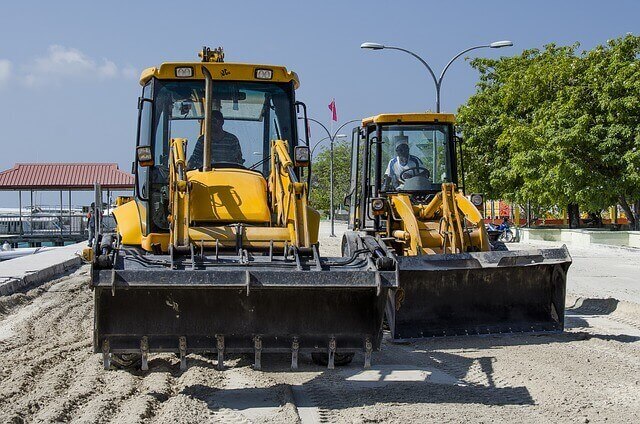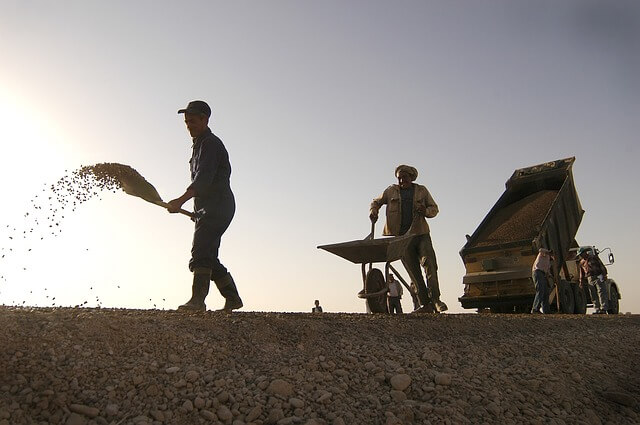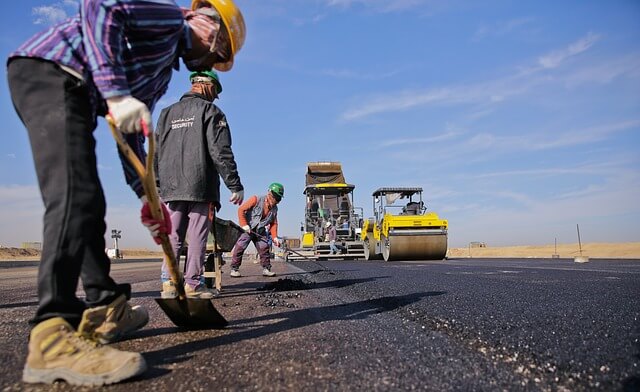8 Construction Procedure of W.B.M. Road
The construction of a W.B.M.(Water Bound Macadam Road) is carried out in the following stages:

1. Preparation of The Foundation
The foundation for receiving the new layer of W.B.M. may be either the subgrade or subbase course. This foundation layer is prepared to the required grade and camber and the dust and other loose materials are cleaned.
On the existing road surface, the depression & potholes are filled and the corrugations are removed.
2. Provision of Lateral Confinement
This can be done by constructing the shoulders to a thickness equal to that of the compacted W.B.M. layer and trimming the inner sides vertically.
3. Spreading of Coarse Aggregates
The coarse aggregates are spread uniformly to the proper profile and even thickness upon the prepared foundation and checked by templates.
4. Rolling
After spreading the coarse aggregates properly, compaction is done by three-wheeled power roller (6 to 10 tones) or equivalent vibrating roller.
The rolling starts from the edges and progresses gradually towards the centre of the road until adequate compaction is achieved.
On the super-elevated portion, rolling it started from the inner or lower edge and progressed gradually towards the outer or upper edge of the pavement.
5. Application of Screenings
After the coarse aggregates are rolled adequately the dry screenings are applied gradually over the surface and try rolling is continued as the screenings are being spread. The brooming operation is also carried out simultaneously.
6. Sprinkling and Grouting
After the application of screenings, the surface is Sprinkled with water, swept and rolled.
7. Application of Binding Material
After the application of screenings and rolling, binding materials are applied at a uniform and the slow rate at two or more successive thin layers. After each application of binding material, the surface is Sprinkled with water and wet slurry swept with brooms to fill the voids.
8. Setting & Drying
After the final compaction, the W.B.M. course is allowed to set overnight. On the next day, the Hungry spots are filled with screenings or binding materials, lightly sprinkled with water if necessary and rolled. No traffic is allowed until the W.B.M. layers set and dry out.




Read Also:
Advantages and Disadvantages of W.B.M Roads
4 Steps in Bituminous Road Construction
Materials Required for Construction of Water Bound Macadam(W.B.M) Roads